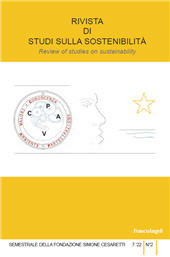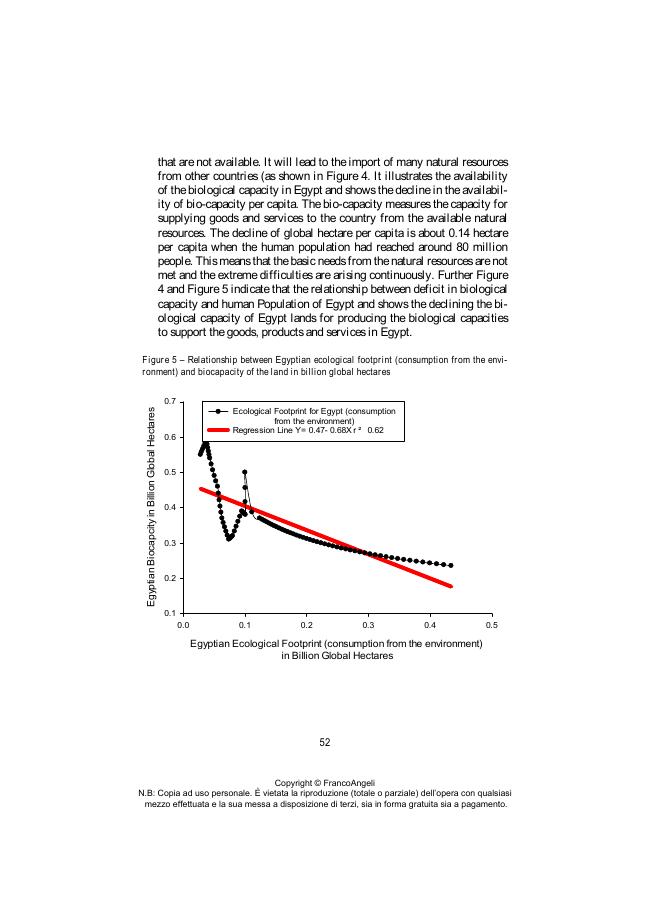2022 - Franco Angeli
Article
Digital Version
Télécharger | Copier/coller | Impression
Ecological human imprint : agroecosystem in Egypt analysis and perspective
41-63 p.
- The agroecosystem is an integral part of the natural resources available to human beings for use and the continuation of the life cycle on Earth. Agroecosystems are complex systems where many species interact with ecological processes at different spatial scales and strong interactions between environmental and management procedures (Loeuille et al., 2013). Therefore, these systems encompass ecologically, and decision networks connected and perform different functions, leading to a wide range of ecosystem services. They are also linked at the landscape scale, making their management difficult. However, these complex interactions can be formalized within the general concepts of interaction networks, and these can be used to elaborate the interactions within and between ecology and management explicitly. Without an agroecosystem, life on this Earth will stop, and the drivers of all ecological life cycles will not continue functioning.
- Energy is the essential factor that makes the working process of human survivability possible. According to World Population Clock, human population growth is alarming in Egypt (i.e., 104 million people and continues to increase by 2.2 million people annually [Macrotrends about Egyptian Population Growth Rate). Therefore, the ecological human imprint will impact Egyptian Earth's natural resources in the form of more consumption and demands that will affect Egyptian social and economic issues. Sustainability will be accomplished if we live within the concept of nature, controlling our human population growth to reduce the impacts of the demands of natural resources. In this respect, sustainability will not be achieved by economic growth alone; instead, the biosphere's natural resources must be able to replenish and allow the natural resources to regenerate themselves to support the growing human population.
- Egypt's agroecosystems are facing declining fertile lands, reduction in water resources, and expansion of the human population on the agricultural lands for housing and other activities without control. The concentration of the Human Population of Egypt is occupying 45% of the total land. It is due to the lack of infrastructure available in the rest of the lands of Egypt (i.e., 96 97% is desert except around the river Nile). The Ecological Human Imprint (EHI), as indicated by Shakir Hanna et al. 2017, is a measuring tool for assessing the carrying capacity of an area regarding the use of the planet's natural resources. Therefore, the "Egyptian Agroecosystem Human Imprint Assessment (EAHIA) Model" (Shakir Hanna, 2021) indicates the magnitude of the impact of the growing human population on the agroecosystems of Egypt.
- In addition, the model predicts that the human population will reach 187 million people in the year 2050 and may be double by the year 2100 in a reasonable assumption of increased human population growth rate at 1.1%; otherwise, there will be disastrous conditions and the spread of the "Hunger Revolution." In addition, the model will calculate the agroecosystem lands, water resources availability, and their production and productivity and economy in Egypt. It predicts the changes and impacts of agriculture systems economically and socially in Egypt and promotes conservation to save agricultural lands from deterioration. [Publisher's text].
Fait partie de
Rivista di studi sulla sostenibilità : XII, 2, 2022-
Informations
Code DOI : 10.3280/RISS2022-002004
ISSN: 2239-1959
KEYWORDS
- Egyptian Agroecosystem Human Imprint Assessment (EAHIA) Model, sustainable development, human population, human imprint
-
Dans le même fichier
- Editorial
- Organization of construction accounting in the process of sustainable development
- Energy performance of green façades
- Ecological human imprint : agroecosystem in Egypt analysis and perspective
- Language policy of the Republic of Kazakhstan : formation and sustainable development
- Innovative management solutions in the agro-industrial business
- Diversification in the enterprises' activities for sustainable development in the agricultural sector
- Legal regulation of access to public information on the state of use of natural resources
- Levers of state regulation for agricultural production
- Scientific and organizational principles of agricultural research in 18-19th centuries
- Government agencies in the field of sustainable agricultural development in various countries
- Analysis of the economic sectors' sustainability of the Kyrgyz Republic
- The need for direct and indirect state regulation for the sustainable development of the agro-industrial complex of Ukraine
- Economic socialization of entrepreneurship of rural territories to ensure the well-being of the population of Ukraine
- Accounting and analytical space of providing the depreciation policy of Ukrainian enterprises
- Sustainable development of the socio-economic security system of the region based on closed cycle technologies
- Semi-finished products based on protein-carbohydrate raw milk materials : economic justification of introducing in restaurants
- Management of agribusiness enterprises to ensure the sustainability of their economic activity
- Implementing the resource potential sustainability of small-scale agricultural entities in cooperative associations of Ukraine
- Risk-orientated management in the sustainable economic system of united agricultural enterprises
- Investment determinant of the sustainability of innovative technologies of energy supply in the agro-food system of Ukraine
- Problems of personnel management and labour resources in the agricultural sector of Ukraine : ways to ensure the well-being of society



